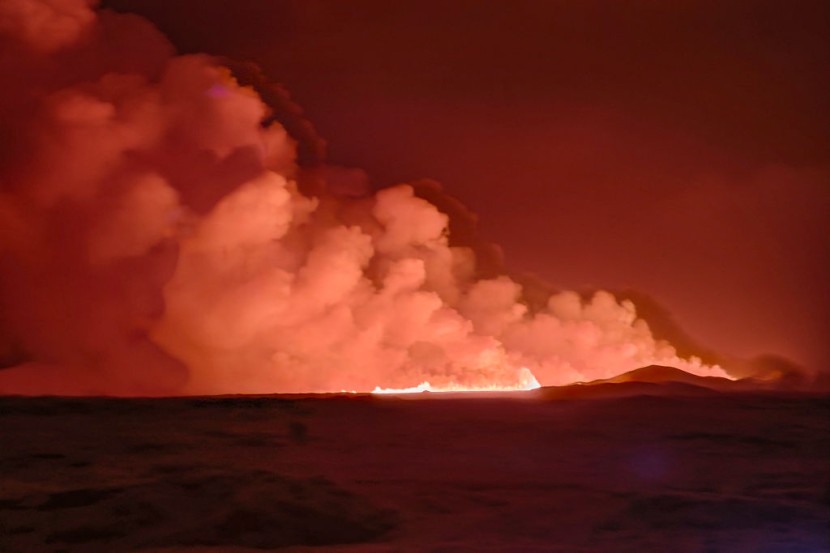In a stunning display of natural power, a volcano located in southwestern Iceland, precisely in the country's most densely populated region, has erupted on Monday.
Lava fountains have soared to impressive heights, casting a radiant glow that illuminates the sky for miles around, including the heart of the capital city, Reykjavik.
Iceland Volcano Erupts

A fissure measuring approximately 2.5 miles in length and exhibiting rapid growth has been detected. This significant geological feature is situated in close proximity to the Svartsengi Power Plant and the town of Grindavík. Per NY Times, the town had been evacuated just last month due to heightened seismic activity, raising concerns about the imminent possibility of an eruption.
According to the initial assessment on Monday night, volcanologists have stated that the eruption took place in a highly unfavorable location, presenting a significant and urgent danger to both the evacuated town and the geothermal power plant.
In the livestreamed footage, viewers were captivated by the sight of glowing orange lava ascending into the darkened sky, enveloped by swirling red smoke. According to the Icelandic Meteorological Office (IMO), a Coast Guard helicopter is set to take off in a short while to verify the precise location and magnitude of the eruption.
Iceland is currently on high alert as it faces the possibility of an eruption. This comes after a series of thousands of small earthquakes shook the region, specifically about 40km (25 miles) south of the capital city, Reykjavik. As a precautionary measure, the fishing town of Grindavik has been evacuated, and the nearby Blue Lagoon geothermal spa has been temporarily closed.
A crack in the earth's surface measuring approximately 3.5km (2.1 miles) in length has been observed. The crack's growth has been reported to be rapid. According to Icelandic seismologist Kristin Jonsdottir, the recent eruption in the area has seen a significant increase in the amount of lava being emitted.
Jonsdottir informed the public broadcaster RUV that approximately 100 to 200 cubic metres (3,530 to 7,060 cubic feet) of lava are emerging per second. This rate is several times higher than what has been observed in previous eruptions in the same region.
Iceland's Active Volcanoes
The local police have increased their alert level in response to the outbreak. Additionally, the country's civil defense has issued a warning to the public, advising them to avoid the area until emergency personnel have evaluated the situation. Located southwest of Iceland's capital, Reykjavik, is the volcanic and seismic hotspot known as Reykjanes.
In a dramatic display of natural forces, lava fountains burst forth from a fissure spanning a distance of 500 to 750 meters (1,640 to 2,460 feet) in the Fagradalsfjall volcanic system. This remarkable event took place in March 2021, captivating observers with its awe-inspiring spectacle.
Following Monday's eruption, the Keflavik International Airport managed to stay operational, despite experiencing a significant number of delays for both incoming and outgoing flights. In Europe, Iceland boasts the highest number of active volcano systems, with a total of 33.
Located on the ocean floor, the Mid-Atlantic Ridge serves as a dividing line between the Eurasian and North American tectonic plates, as per Aljazeera.








